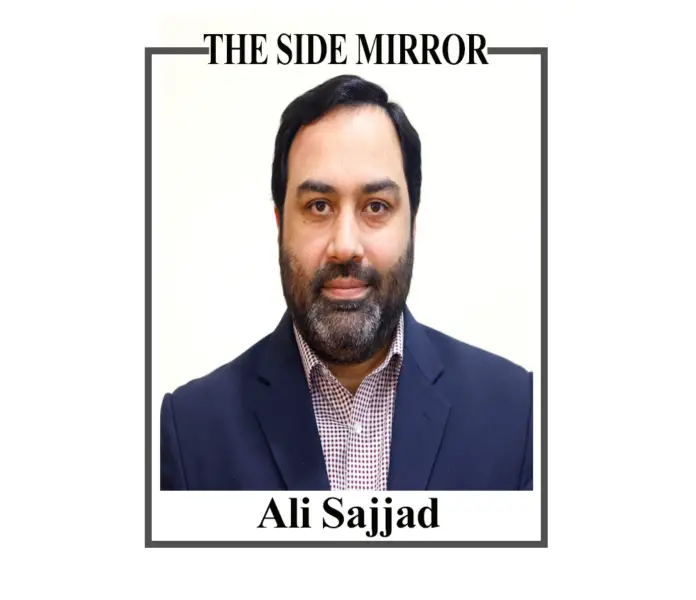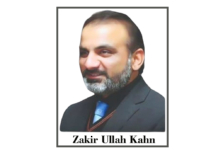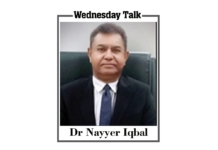Happy Ramazan to my readers! May you have blessed time!
The last few pieces of mine have been dedicated to the people coming into power. This one is for the federal cabinet. In a solemn ceremony at the President House, President Asif Ali Zardari administered the oath to the 19-member federal cabinet. This marks the official inception of Prime Minister Shehbaz Sharif’s government.
I spoke to a few people about the choice of cabinet faces, and not everyone is enthusiastic or totally dejected about the lineup. Some friends expressed disappointment over the absence of a more inclusive, cross-party collaboration.
But I feel that the newly-formed cabinet has a mix of familiar and fresh faces. The cabinet would have been more powerful if there was no absence of of Pakistan Peoples Party (PPP), a key ally of the Pakistan Muslim League-Nawaz (PML-N), in the federal government. This signals a potential lack of broader political unity.
The list of federal ministers includes both seasoned politicians and fresh entrants, such as Khawaja Muhammad Asif, Ahsan Iqbal Chaudhry, Rana Tanveer Hussain, Azam Nazeer Tarar, and Abdul Aleem Khan. Notable returnees to the political scene include Khawaja Asif, Ishaq Dar, Ahsan Iqbal, Azam Nazeer Tarar, and Musadik Malik.
Expressing his discontent, a prominent journalist remarks, “Frankly speaking, this is not my dream cabinet.” The journalist advocates for a more comprehensive representation, suggesting the inclusion of members from PML-N, PPP, and Pakistan Tehreek-e-Insaf (PTI) to form a unified government under the leadership of Nawaz Sharif.
Is it possible for PTI members to be minister under ‘prime minister’ Nawaz Sharif?
My friend says that at least there should have been some efforts to reach this goal, and given the condition of the economy, the parties could have forged an alliance for the betterment of the country.
In an ideal scenario, the journalist envisions Nawaz Sharif as the driving force behind a unified government, calling him as the true vote power of PML-N. However, in the incumbent arrangement, Nawaz Sharif’s influence within his own party government is perceived as limited. This raises questions about the dynamics at play.
Furthermore, the journalist contends that involving sensible voices from PTI in the cabinet could have added stability to the government. In this hypothetical scenario, Bilawal Bhutto Zardari, the PPP chairman, could have held a significant position such as deputy prime minister or foreign ,inister, contributing to a more balanced representation.
Prime Minister Shehbaz Sharif submitted a summary to President Zardari, proposing a 19-member cabinet, including 18 federal ministers and a minister of state. Notably, PPP declined participation in the federal cabinet, raising eyebrows about the cohesion within the coalition.
The oath-taking ceremony was held at the President House in Islamabad, marked by the playing of the national anthem and the recitation of the Holy Quran. The ceremony symbolized the official commencement of the newly appointed federal cabinet’s responsibilities.
Now, a few lines about new faces like Mohsin Naqvi and Attaullah Tarar.
Mohsin Naqvi stands out in the cabinet because of his outstanding work as the caretaker chief minister of Punjab. No doubt, he brought about significant changes in Punjab. The public sees their entry as a potential shift in the traditional political landscape.
Despite the unveiling of the cabinet, the allocation of portfolios remains pending, adding an element of suspense to the political atmosphere. Sources suggest that except for Ishaq Dar, who is expected to retain his position, other members may witness some shuffling.
As the new government takes its initial steps, the nation awaits the unveiling of portfolios and hopes for a collaborative and effective administration that addresses the diverse needs of the people. The dynamics within the coalition, especially the absence of PPP from the federal cabinet, will keep on haunting the government and its ability to navigate the complex political landscape.







